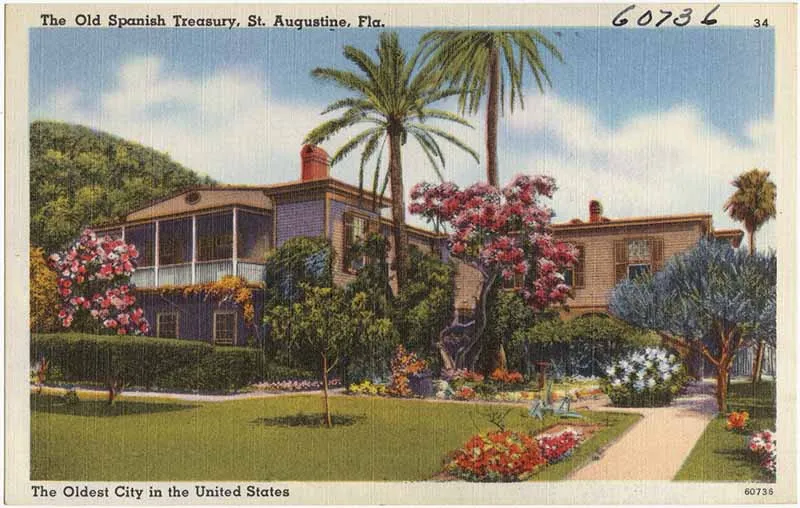Step Back in Time at the Historic Peña-Peck House
As one of St. Augustine's oldest colonial buildings, The Peña-Peck House invites visitors to experience centuries of history firsthand. From its royal Spanish origins to its vibrant present, every corner tells a story waiting to be discovered. Built around 1750 by royal decree of King Ferdinand VI for Spanish Royal Treasurer Juan Estevan de Peña, The Peña-Peck House stands as one of St. Augustine's most iconic colonial treasures. This remarkable coquina stone home has borne witness to nearly three centuries of history, serving as a canvas for stories of love, loyalty, and resilience.

A Spanish Legacy and British Intrigue
Originally constructed for Juan Estevan de Peña and his wife, Maria Antonia Adrisola, the house was their cherished home for 14 years. Their “love affair” with the property ended abruptly in 1763 when Spain ceded Florida to Great Britain in the Treaty of Paris. During the British occupation, the house gained prominence, hosting governors like John Moultrie and Patrick Tonyn.
Governor Patrick Tonyn: The Last British Official in the United States
Patrick Tonyn, Florida's last British governor, played a pivotal role in the tumultuous period of the American Revolution. As a staunch Loyalist, he transformed St. Augustine into a critical refuge for British Loyalists fleeing the rebellious colonies. The Peña-Peck House became the Tonyn family's residence and a hub of British influence, where political strategies were planned, and the Crown’s authority was upheld in a time of uncertainty.
Even after the Treaty of Paris (1783) officially ended the Revolutionary War, Tonyn remained steadfast in his duties, making St. Augustine the final stronghold of British governance in what is now the United States. In 1785, as the British prepared to cede Florida back to Spain, Governor Tonyn oversaw the evacuation of British troops, officials, and Loyalist settlers from the region. This made him the last British official to leave the United States, marking the symbolic end of Britain’s direct control in North America. His departure closed a significant chapter in colonial history and underscored St. Augustine’s pivotal role during this era.
Return to Spanish Rule and a New Beginning
Florida’s return to Spanish hands in 1783 marked a new chapter for the home. Francisco Xavier Sanchez, a St. Augustine native, Revolutionary War patriot, and Florida's first cattle rancher, purchased the property in 1791. His family retained ownership until 1821, shaping its legacy during the Second Spanish Period.
The Peck Family Era
In 1837, Dr. Seth Peck acquired the house, transforming it into a family residence and a hub of community life. Dr. Peck added a wooden second story to accommodate his growing family and established a medical office and general store on the ground floor. The house became a blend of practicality and elegance, featuring a formal dining room and a modern kitchen—cutting-edge for its time.

A Legacy Preserved by The Woman's Exchange
In 1931, Anna Gardner Burt, Dr. Peck’s granddaughter and the last family owner, entrusted the house to the City of St. Augustine. She envisioned it as a preserved example of Southern antebellum architecture, complete with its original furnishings, antiques, and artwork. Despite initial hesitation, the City accepted her generous gift, and in 1932, the Woman’s Exchange assumed responsibility, on behalf of the City of St. Augustine, for managing and showcasing the home. Tours began on May 1, 1932, coinciding with the opening of the Gift Shop, which continues to operate in this historic space.